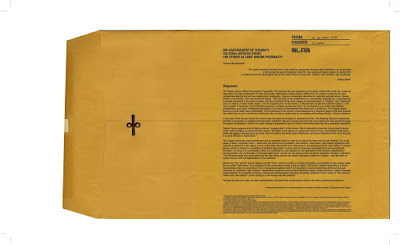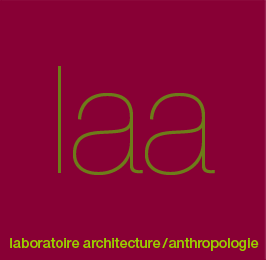 Bio-cartography of Tijuana’s cultural-artistic scene: The uterus as limit and/or possibility
Bio-cartography of Tijuana’s cultural-artistic scene: The uterus as limit and/or possibility
Fiamma Montezemolo
The nation (localism) stands forth as the enduring substratum through which individuals are guaranteed a life beyond the purely biological, finite life. This supposed organic power for giving birth is insinuated by the etymological link of the nation (what is local) with “nativity” and
“birthing” [my emphasis].
Pheng Cheah[1]
Diagnosis:
The Tijuana-uterus suffers from extreme Topophilia.[2] This involves the over-protection of the foetus-cultural life of the city, rendering separation from the womb/point of origin impossible. Separation anxiety makes it difficult for the subject to develop her own autonomous identity and her own explanatory cartography. Tijuana is continually described in maternal-patriotic terms: Tijuana, mother of all frontiers, Here the homeland begins… This amounts to the substitution of a nationalistic language for a language that is equally embedded in the myth of origins, but also connected to the local. Tijuana is characterized as a “singular” and “nurturing” place as well as an ideal urban model: TJ is the happiest place in the world; TJ: Shantytowns as the new suburban ideal; TJ: the world capital of television. Such definitions embody a strategic positioning that is in counterpoint to so-called cannibalistic globalisation, and which if employed excessively is in danger of transforming the uterus into a closed box. The Tijuana-uterus becomes a limit rather than a potentiality. If the experience of the uterus is conceptualised as a transitory stage on the path towards life, rather than an end in itself then making the city can also be understood as an ongoing and evolving destiny, a work in progress.
In the case of the Tijuana-uterus the mother does not allow her progeny to separate from her. The offspring idealizes uniqueness (whether it is positive or negative) through hyper-definition: Tijuana is always the most: the most visited, the most passed through, the ugliest. Remaining in Tijuana and never leaving is explained in terms of myths constructed about the city’s contextual specificity.
Patient Tijuana appears to be suffering from an “exaggeration” of the uterus. This is indicated by how she is described in terms of the myth of origins. As Simon Schama states: “We begin in the uterus, in a place that seems to have comfortable limits and in which we wiggle, knowing what we know. But then there is the place-space distinction, and space frightens all the more because it is more difficult to understand.”[3]
The Tijuana-uterus has been transformed into an aesthetic object in order to be utilized by those who do not “belong” to it in the sense of being “originally from”—those who are referred to as outsiders. The curators, researchers, and cultural organizers who exalt the uniqueness of the region, in turn, reveal their own desire to be “discoverers” and preservers of the “new native’s” creative genius, which is fostered in conditions of material deprivation. A place that has long been marginalized is now provisionally included—as long as it is potentially useful. It is mobilized for, and adjusted to, the ideologies of the moment: globalisation – homogenisation, the exoticisation of the fashionable trend,[4] and the use and abuse of the concept of “authentic” Western civilization.[5] This Tijuana myth may prove useful for the time being, but we can always anticipate a return to “origins,” once the myth no longer concurs with the expectations of the outsiders.
Where once the “global” was too global now the “local” seems to suffer an excess of localism. Is it possible to stop seeing-using the so-called “third world” as a projection of the frustrations-needs of the so-called “first world” without relegating it to some Rousseaunian ideal or converting it into a homogeneous global entity? Is it possible to cease establishing difference through reference to “authentic” and “original” oppositional categories such as third world/first world, creative/practical, hidden/exposed, inside/outside? Is it possible to imagine a more lucid understanding of distance-proximity, related to Freud’s notion of “the uncanny,” rather than “the strange” as the synonym of the foreign and the unusual?
Perhaps the time has come for other cartographies, detached from mothers/god-mothers and their protections/projections.
Fiamma Montezemolo is an anthropologist and scholar currently working in Tijuana and San Diego.
[1] Pheng Cheah, Spectral Nationality, Columbia University Press, 2003.
[2] “Topophilia” describes the “affective bond between people and place or setting,” and the values of human perception of spatiality (Tuan Yi-Fu, Topophilia: A Study of Environmental Perceptions, Attitudes, and Values, Columbia University Press, 1990, p. 4).
[3] T. Dean and J. Millar, Place, Thames & Hudson, 2005.
[4] Antonio Navalón, the Mexican business representative of the Spanish Prisa group, defined local space in order to position it in counterpoint—along with the space of the United States space—to the space of “religious fundamentalism”: “We are facing a total war among civilizations in which the elements that unite equal or similar civilizations should be more important than the cultural and legalistic fears that separate us. In this respect, the fact that Mexico and the other countries that produce emigrants belong to Western civilization, should bear greater weight than the effort to separate and pit the members of those same communities against one another through abstract fears. The common enemies on the Mexico-US border are those whose religious fundamentalism—pre-supposing the existence of social anarchy in the frontier— leads them to attempt to attack the methods and values common to free and democratic societies…” (Montezemolo-Sanroman, Replicante, 2005, p. 44).
[5] “A new world. Tijuana is a new cultural Mecca. The city is recognized by a number of publications in the United States, Europe and Mexico as a vibrant place of artistic innovation. Back in 1989, Néstor García Canclini was already describing Tijuana as ‘one of the major post-modern laboratories,’ placing it on an equal footing with New York. Since then, journalists, academics and critics have celebrated the exciting diversity of Tijuana’s artistic output.” (Rachel Teagle, Strange New World, MCASD, 2006).






